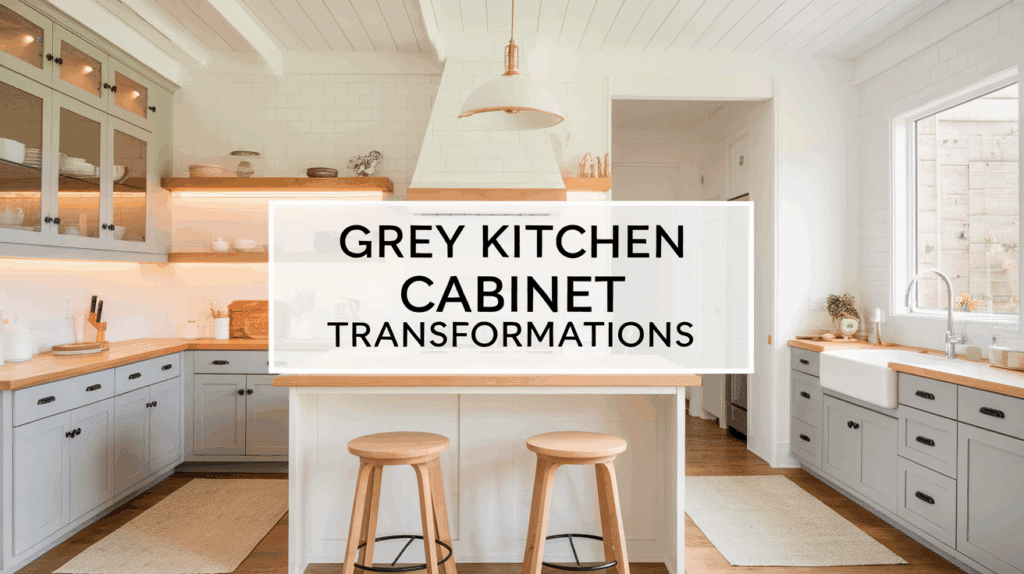Grey kitchen cabinets have become one of the top choices for homeowners looking to bring a fresh, clean look to their kitchen without making it feel cold or too trendy. Grey may seem like a basic color, but in kitchens, it creates depth, calm, and style that lasts.
Years ago, people often chose bright whites or deep woods for their kitchen cabinets. But those choices came with trade-offs. White showed every speck of dirt, and dark woods made rooms feel smaller. Grey found its way in as the solution. It brings in the best of both worlds—brightness and character.
Grey is also flexible. It can be warm or cool, soft or bold. It matches most other colors, which makes it a smart choice when you’re not planning to change everything else in your kitchen.
In this blog, let’s walk through what makes grey cabinets such a smart option. We’ll also look at some before-and-after transformations, share helpful tips, and answer common questions to help you decide if it’s time to give your kitchen the makeover it deserves.
Why Paint Your Kitchen Cabinets Grey?
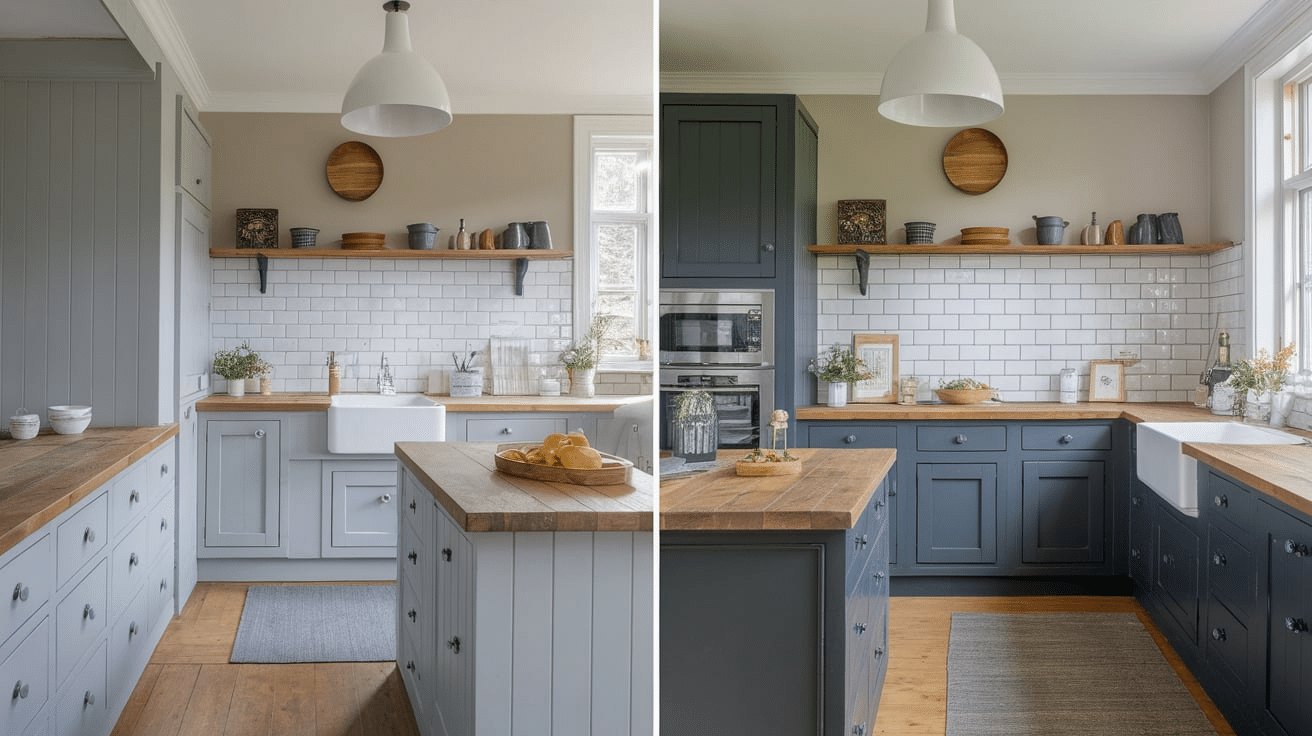
Grey is often called a “safe” color, but in kitchens, it’s anything but boring. It’s the middle ground between white and black—not too light, not too dark. Depending on the shade, grey can be soft and quiet or bold and strong.
Here’s why grey works so well:
- It matches with almost every other color.
- It works in all types of kitchens — big or small, old or new.
- It hides dirt and smudges better than white.
- It allows other design pieces, like tile or countertops, to shine.
Grey offers balance. It’s modern but not cold. It’s simple but not dull. This makes it one of the most popular choices for people redoing their kitchens today.
Grey also makes transitions easy. If you change your decor or buy new appliances, grey usually blends in without needing a whole new plan. It doesn’t fight for attention but still brings a calm style to the room.
Before and After– What Kitchens Look Like When Painted Grey
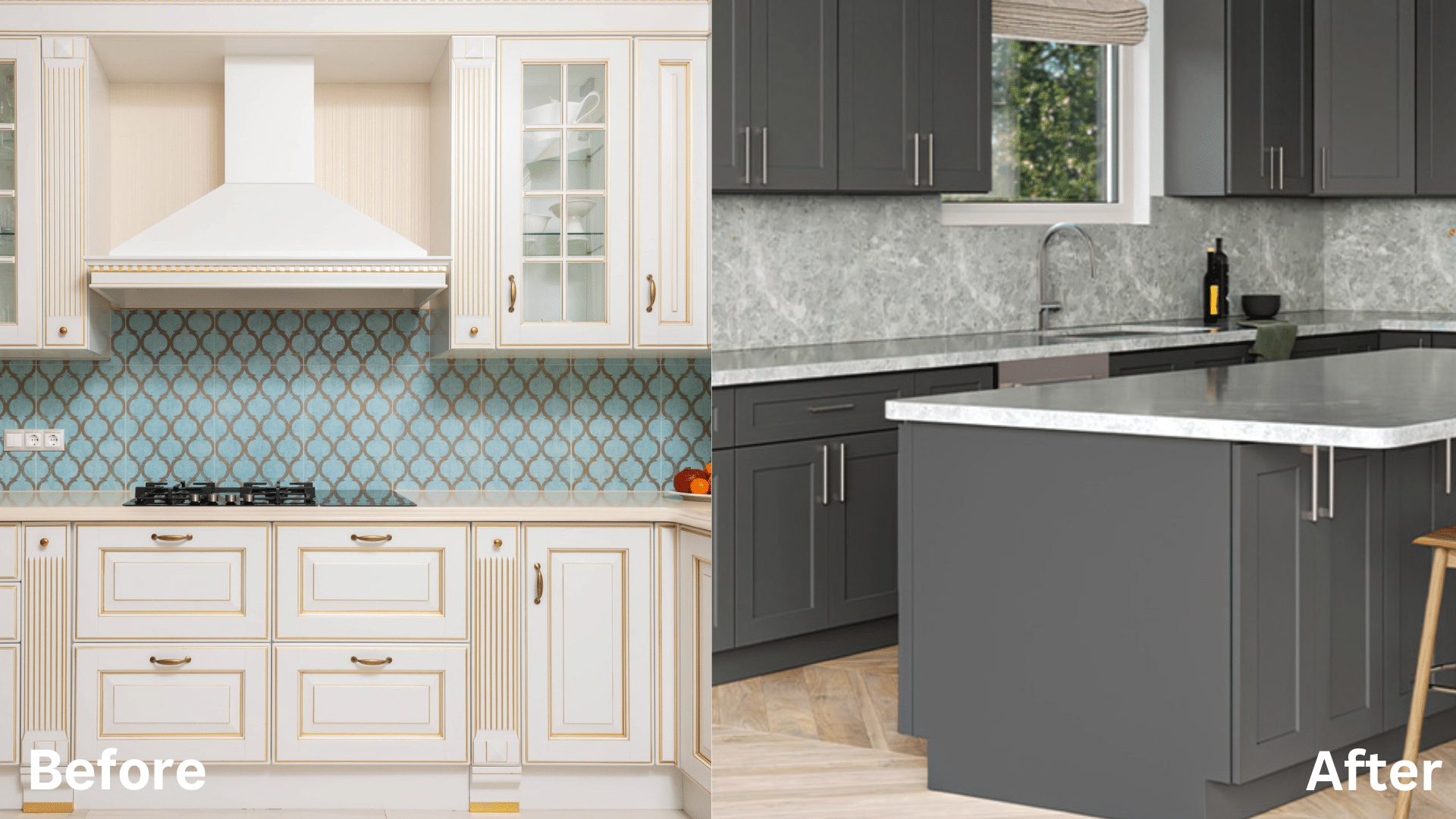
Many kitchens that haven’t been updated in years tend to have similar features. These features make the kitchen feel stuck or worn out, even if everything still works fine.
Old Wood Finishes
A lot of older kitchens have oak or maple cabinets with yellow, orange, or red tones. Over time, these colors can make the kitchen feel heavy or dim, especially if there’s not a lot of natural light.
These wood finishes were common in homes built in the ’80s and ’90s. While strong and durable, the look hasn’t aged well. Now, these cabinets often feel bulky, dated, and too warm for today’s cleaner kitchen styles.
Plain White Cabinets
On the other hand, some kitchens have white cabinets that were popular years ago but have faded, chipped, or turned yellow with age. While white can be clean-looking, it can also feel flat when overdone.
When paired with white walls and white counters, white cabinets can make a kitchen feel like a hospital room — sterile and lacking life. Without any contrast or warmth, the room feels unfinished.
Mismatched Colors
Some kitchens mix too many colors, and the cabinets end up clashing with the walls, countertops, or floors. It becomes hard to find harmony in the space.
Cabinets are one of the largest features in a kitchen. If their color is off, the whole space feels off. That’s why painting them grey helps bring everything together. Grey acts as a neutral background that ties different parts of the kitchen into one clean look.
Painting cabinets grey doesn’t just change the color — it transforms the whole feeling of the kitchen.
Cleaner Look
Grey cabinets bring a cleaner, more put-together look to the space. The lines look sharper. The surfaces feel smoother. Everything looks like it fits together better.
Even older cabinets, once painted grey, can look brand new. Grey hides scratches and uneven patches better than white or bright colors. Depending on the lighting, grey also gives a soft glow, making it easier on the eyes.
More Light or More Depth
Depending on your choice of grey, your kitchen can feel brighter or deeper. Light grey can make a small kitchen feel open and airy, while dark grey can give larger kitchens a sense of boldness and comfort.
Lighter greys reflect light better and make a kitchen feel bigger than it really is. Dark greys add richness and mood, especially when paired with lighter walls or countertops. Both versions offer different benefits depending on your space.
Matches with Modern Touches
Grey works well with open shelving, wood accents, tile backsplashes, and metal handles. It’s a solid background color that lets other design parts stand out without overpowering them.
Even small changes like a black faucet, brushed gold handles, or marble counters pop more against grey. It’s easier to build a full kitchen look around grey because it’s not too loud or too plain.
Real-Life Examples of Grey Kitchen Cabinet Makeovers
Let’s look at some before-and-after stories to see the real difference grey cabinets can make.
Orange-Toned Wood to Cool Light Grey
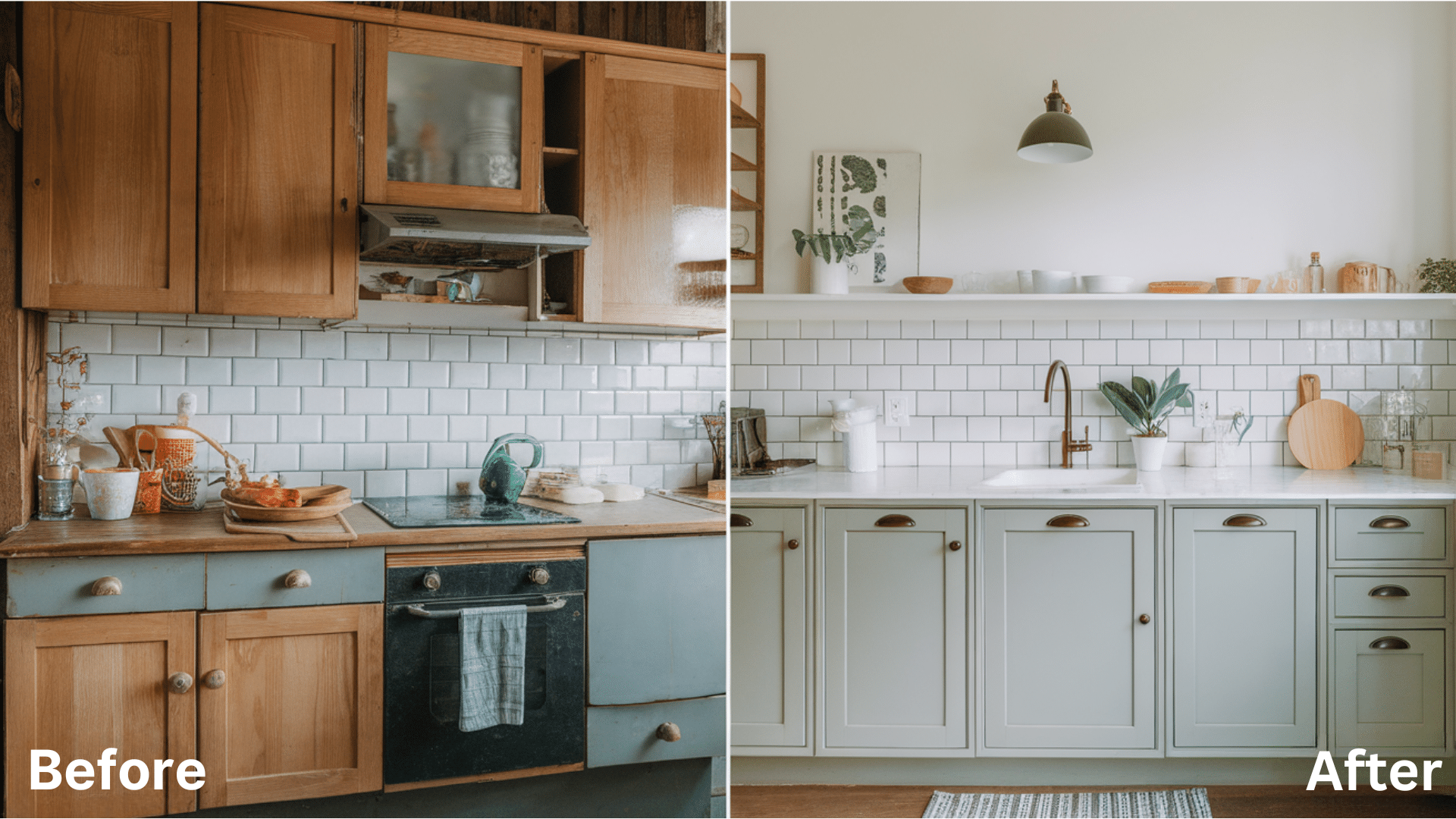
Before: The kitchen had oak cabinets with a yellow tone, the floor was light wood, and the walls were beige. Everything felt kind of dated.
After: The cabinets were painted a light, cool grey with simple black handles. White subway tile was added as a backsplash. Suddenly, the kitchen looked bright, clean, and modern — without changing the layout or the floors.
This transformation helped make the space feel fresh and less crowded. Grey gave the room a clean base, making it easier to add color through wall art and dishes.
Plain White to Soft Warm Grey
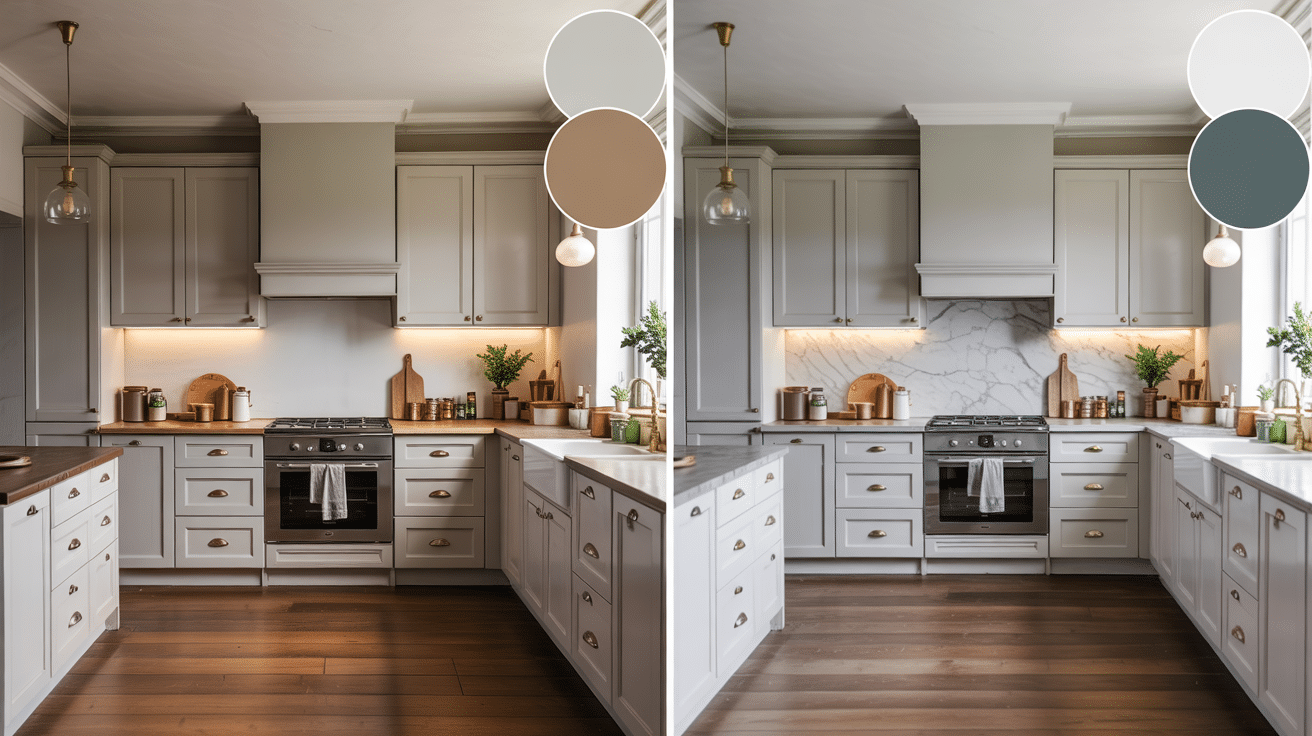
Before: The kitchen had white cabinets with lots of stains and scratches. The wall color was off-white, and the room looked plain, even though it had good light.
After: A soft grey with a touch of brown was added to the cabinets. Bronze handles were used to give warmth. A wooden counter and a few hanging plants brought the space to life. Now it felt calm, fresh, and lived-in.
This change added just enough warmth to make the kitchen feel cozy but still fresh and modern. It worked well with natural elements like wood and greenery.
Dark Cherry Wood to Bold Charcoal Grey
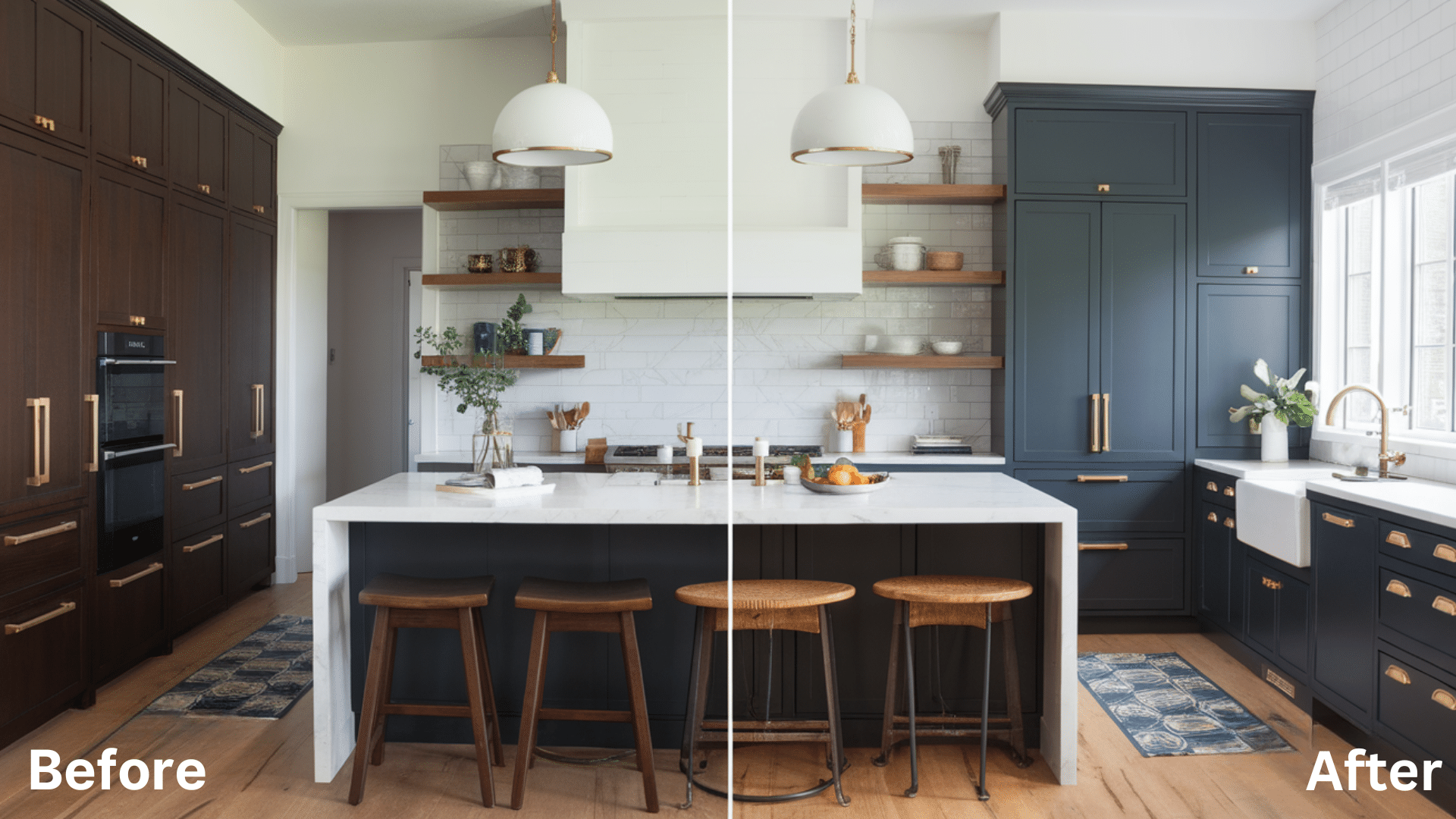
Before: Dark cherry cabinets and black counters made this kitchen feel small and shadowy. The lighting was limited, and everything felt too dark.
After: The cabinets were painted a bold charcoal grey. White quartz counters were added. Under-cabinet lighting helped brighten the workspaces. Brass handles brought a warm shine. The kitchen now felt strong but not heavy.
This deep grey gave the kitchen a strong base, but smart lighting and white touches made sure it didn’t feel closed in.
How to Pick the Right Grey for Your Kitchen
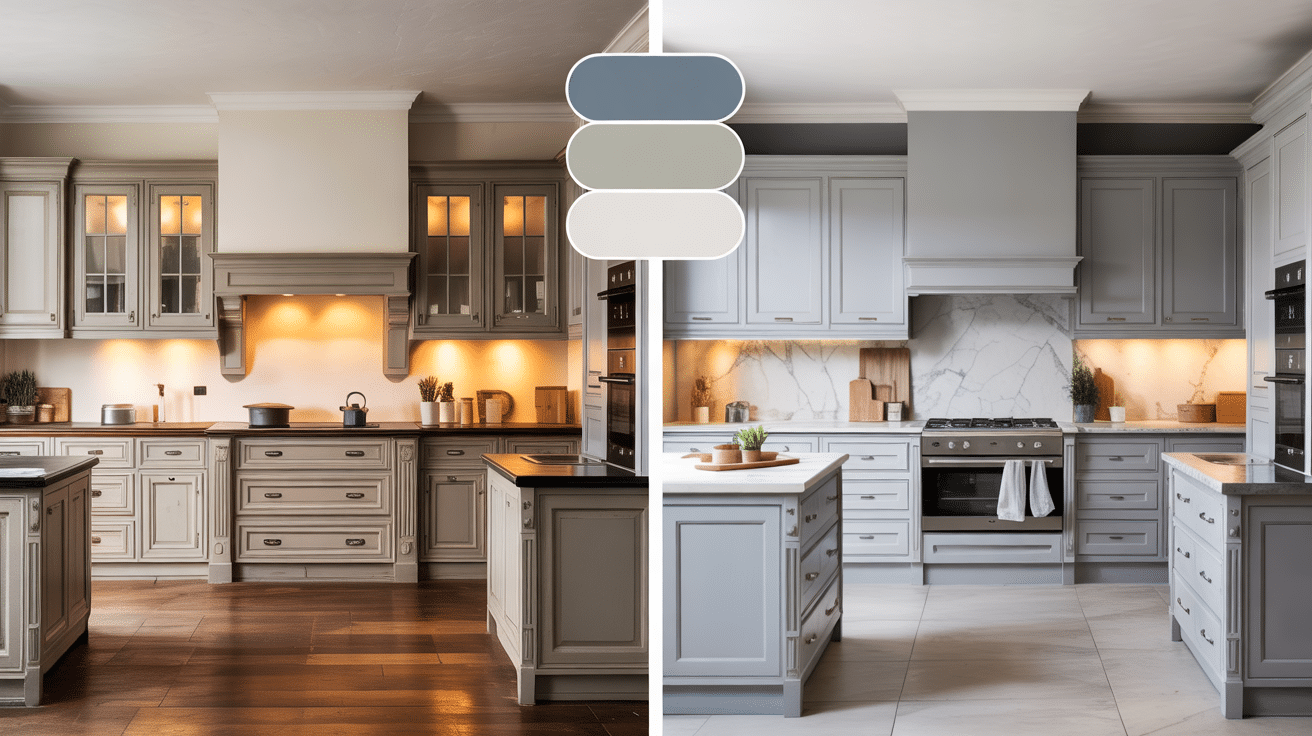
Not all greys are the same. Some are warm (with hints of brown or beige). Others are cool (with blue or green tones). Picking the right one can make or break your kitchen look.
Look at the Light in Your Kitchen
If your kitchen doesn’t get much sunlight, go for a warmer grey. It adds a little comfort and stops things from feeling too cold. If you have a lot of light, cooler greys can look sharp and fresh.
Try turning off all the lights during the day and just relying on natural light. Notice if the space feels cold or warm. That will help you pick the right shade of grey.
Think About Your Countertops and Floors
- If you have white counters, almost any grey will work.
- With beige or cream counters, go for a warmer grey.
- If your floors are dark, balance them with a lighter grey.
Look at samples in the room they’ll be used in. Don’t judge based on how they look in the store.
Try Samples
Get sample cans of a few greys and paint patches on your cabinets. Watch how they look at different times of day. This can stop you from picking a shade that looks blue in the morning and green at night.
Also, look at the sample next to metal handles, backsplash, and lighting. The color might change depending on what’s nearby.
How to Paint Cabinets the Right Way
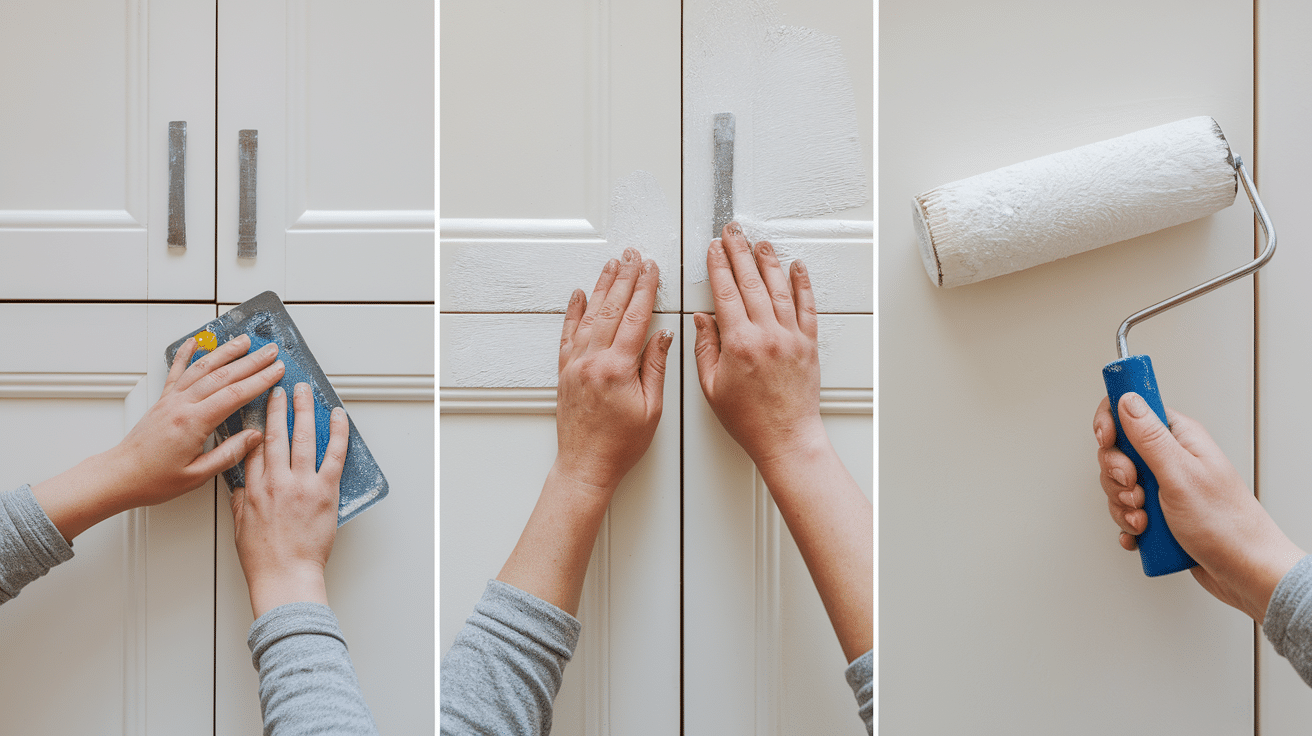
If you’re doing the painting yourself, here’s a basic guide:
Step 1: Remove Doors and Hardware: Take off the cabinet doors, handles, and hinges. This makes it easier to paint every part of the surface.
Step 2: Clean Everything Well: Use a degreaser to clean off any oil, food stains, or dust. Cabinets hold a lot of grime — especially near the stove.
Step 3: Sand the Surfaces: Lightly sand all the cabinet parts. This helps the paint stick better. Wipe off the dust with a damp cloth.
Step 4: Use a Primer: Always apply primer before your color paint. It helps cover any old finish and keeps your paint from peeling later.
Step 5: Paint in Thin Coats: Use a roller or brush and paint in light coats. Wait for each coat to dry fully before adding another. Usually, 2–3 coats give the best result.
Step 6: Add a Clear Coat: A clear finish on top protects your paint from scratches, grease, and water.
Extra Touches That Help Grey Cabinets Shine
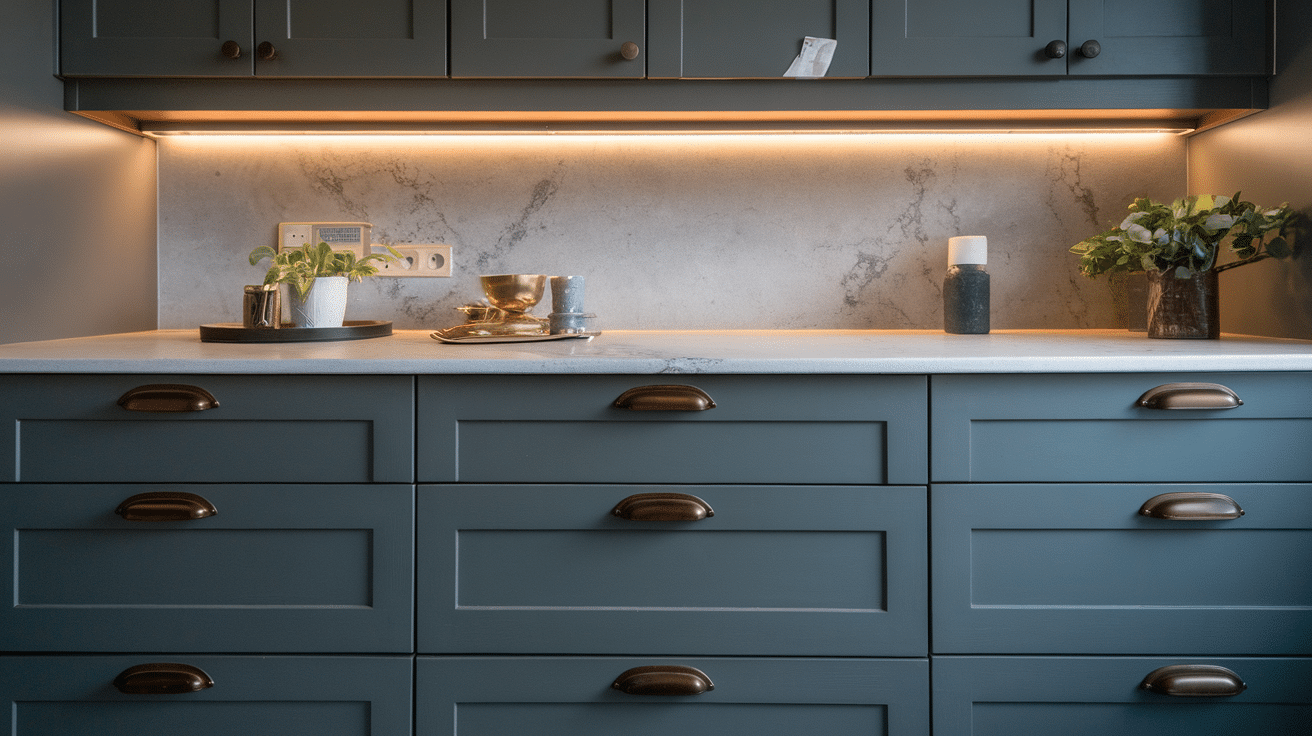
You don’t have to stop at painting. A few small updates can take your cabinets even further.
- Change the Handles: Swap out old handles for something that fits the new color. Matte black, brushed nickel, gold, or bronze all go great with grey.
- Add New Backsplash: A backsplash of white tile, stone, or light wood pairs beautifully with grey and helps bring the whole kitchen together.
- Install Lighting: Lights under cabinets or inside glass-door cabinets highlight the new paint and make your kitchen feel more inviting.
Common Mistakes to Avoid
- Skipping the primer – This causes peeling and uneven paint.
- Painting without sanding – Paint won’t stick well to a glossy or dirty surface.
- Using the wrong tools – Cheap brushes or rollers leave streaks and fuzz.
- Choosing the wrong grey – Always test first. What looks good on paper might not look right in your kitchen.
- Painting in a hurry – Rushing leads to drips and uneven layers.
Conclusion
Grey cabinets are more than just a trend. They offer a calm, clean look that works well with many styles. They help a kitchen feel new without changing everything. With just paint and a few updates, you can get a space that feels more your own.
Grey brings balance. It’s soft without being dull. Strong without being loud. You can pair it with bold accents or keep it simple. Either way, it gives you a great base to build on.
If you want a change that feels easy but makes a big difference, painting your cabinets grey might be the right move.
Frequently Asked Questions
Are Grey Kitchen Cabinets Still in Style?
Grey is still a solid choice. It works well with light or dark counters, floors, and walls. You can go for a modern, country, or even a plain look.
What’s the Best Paint Finish for Cabinets?
These finishes are smooth but not too shiny. They’re easy to wipe clean when food or grease gets on them.
How Long Does It Take to Paint Cabinets?
If you’re painting by yourself, you’ll need time for prep, priming, drying, and sealing. Each layer takes time to dry fully.
Can Grey Work in a Small Kitchen?
Light grey tones help open up the space. They reflect more light and make the room feel bigger. You can pair grey with white walls or glass doors to keep it bright.
Do I Need to Seal the Cabinets After Painting?
The clear top coat keeps the paint safe from scratches, steam, and food mess. It also makes cleaning much easier.

